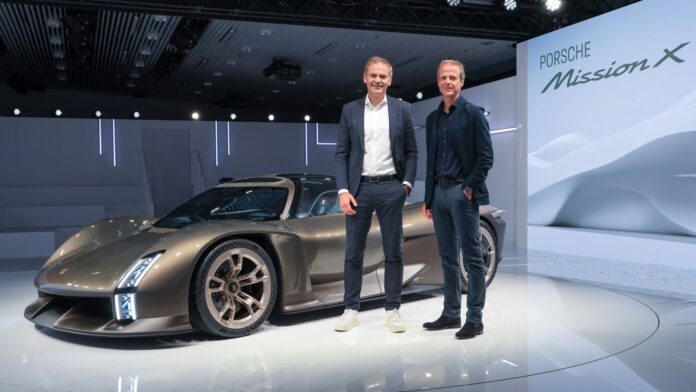Porsche had a long-standing tradition of using innovative concept cars to pave the way for the future. This tradition was continued with their latest concept study, the Mission X, which represented a breathtaking reimagining of a hypercar. The Mission X boasted Le Mans-style doors that opened in a vertical upward motion towards the front, along with a high-performance electric powertrain that delivered exceptional efficiency.
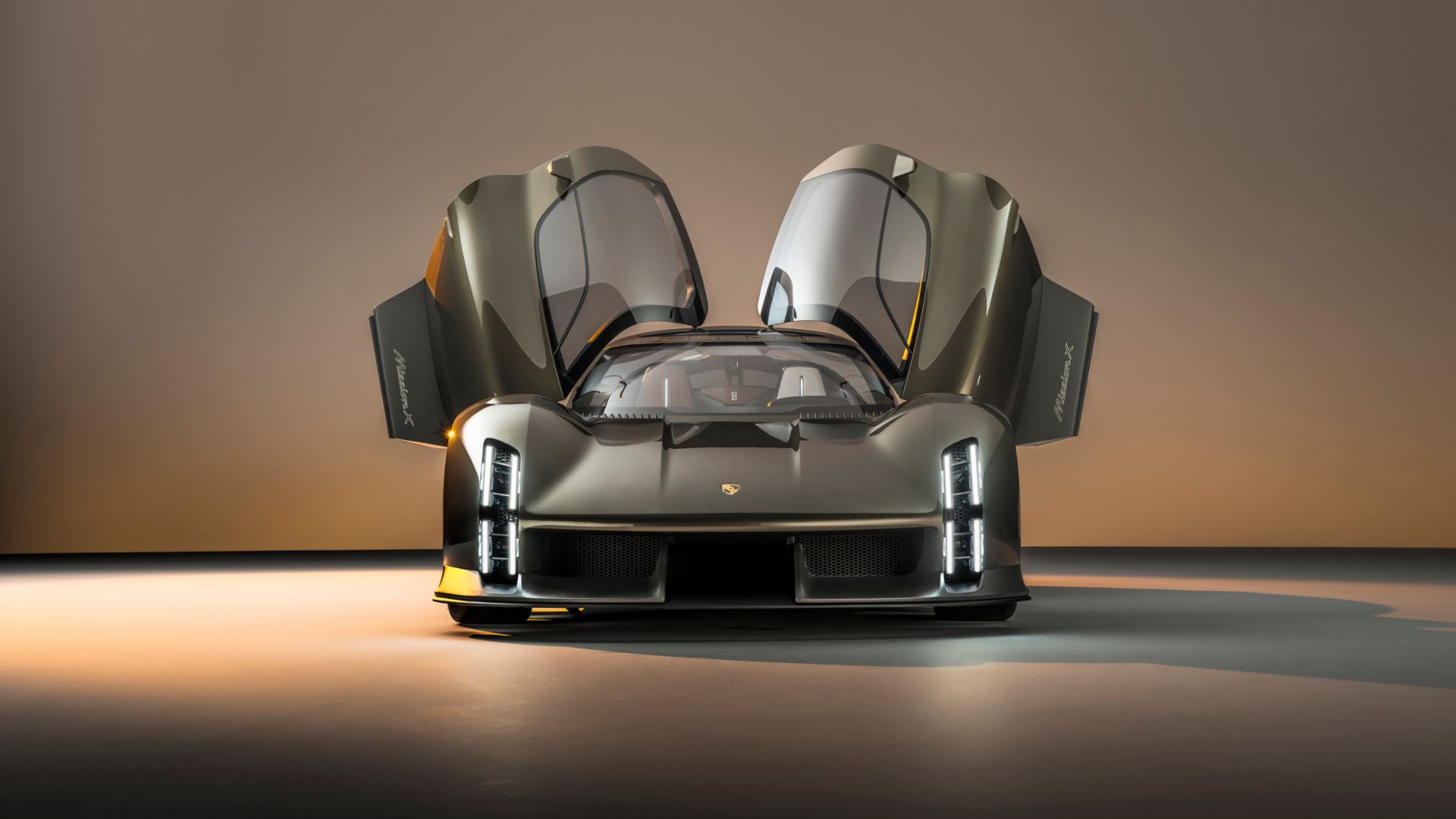
The Mission X was a dramatic-looking two-seater and celebrated its premiere on June 8, 2023 – the eve of the ‘75 Years of Porsche Sports Cars’ exhibition opening at the Porsche Museum in Stuttgart-Zuffenhausen. It was a special date as 75 years ago, on June 8, 1948, the 356 ‘No. 1’ Roadster became the first automobile bearing the name Porsche to receive its general operating permit, marking the birth of the sports car brand.
Oliver Blume, Chairman of the Executive Board of Porsche AG, stated, “The Porsche Mission X was a technology beacon for the sports car of the future. It followed in the footsteps of iconic sports cars from past decades: like the 959, the Carrera GT, and the 918 Spyder. The Mission X provided crucial momentum for the evolutionary development of future vehicle concepts. Daring to dream and dream cars were two sides of the same coin for us: Porsche has only remained Porsche by constantly changing.”
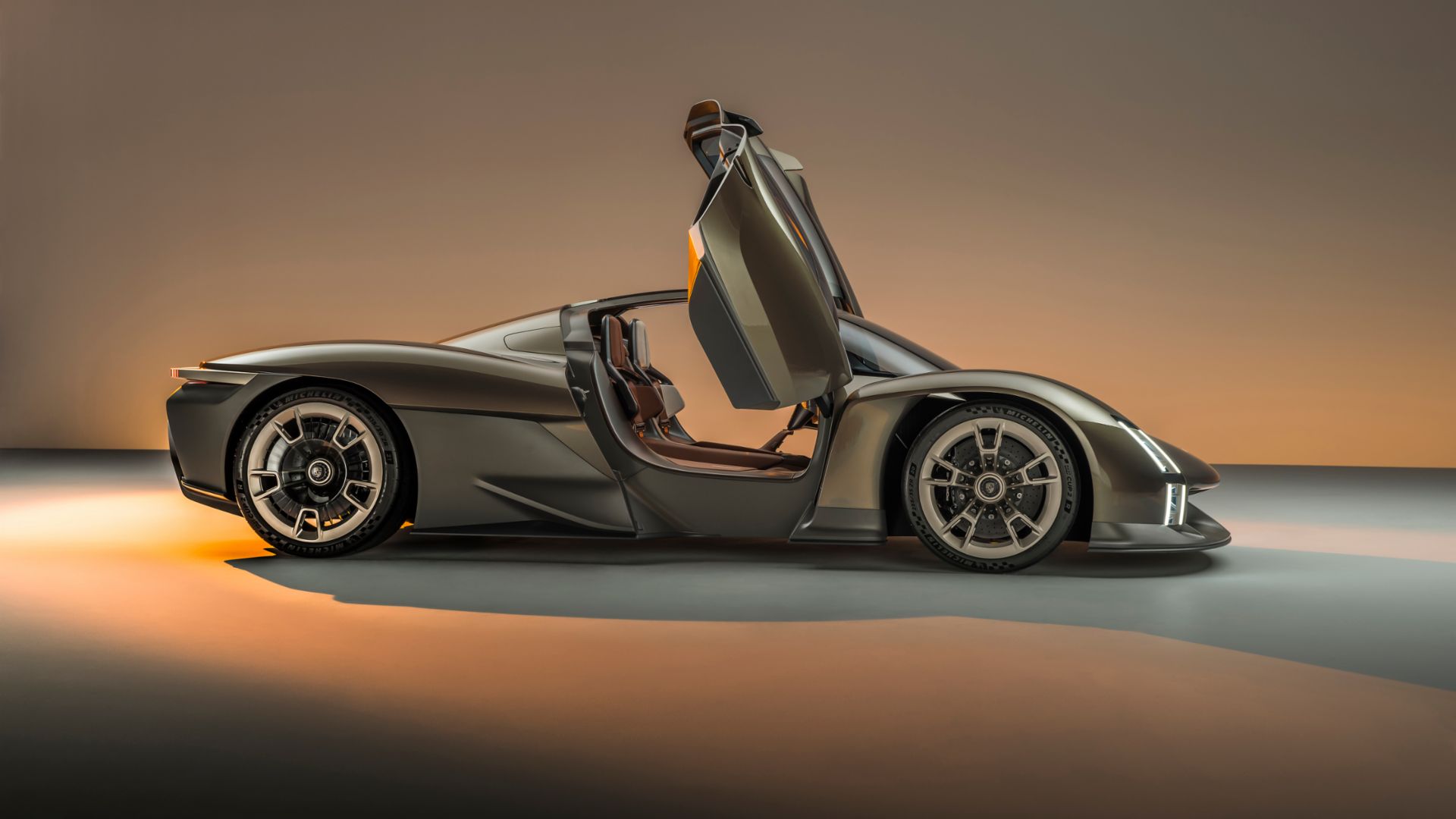
With dimensions of approximately 4.5 meters in length and two meters in width, the Mission X concept study was a relatively compact hypercar. It shared the wheelbase dimensions of 2.73 meters with the Carrera GT and 918 Spyder. The concept car incorporated mixed-size tires for aerodynamic purposes, with 20-inch wheels at the front and 21-inch wheels at the rear.
The Mission X represented the pinnacle of performance and modern luxury. At the same time, its sculpted form and muscular lines demonstrated that hypercars didn’t have to look aggressive. The car’s low-slung bodywork, standing at less than 1.2 meters tall, boasted an elegant Rocket Metallic paint color specially designed for the concept study. Carbon-weave finish design elements could be seen below the beltline. These components were varnished in a satin finish, allowing slight coloring while retaining their recognizable material structure.
Elaborate details adorned the wheels of the concept study, with almost transparent aeroblades resembling turbines installed on the rear axle. These aeroblades were designed to enhance brake cooling.
A lightweight glass dome with an exoskeleton made of carbon-fiber-reinforced plastic extended over both occupants. The Le Mans-style doors were attached to the A-pillar and the roof, opening forwards and upwards. This door design had previously been used on the legendary Porsche 917 racing car. The designers of the Mission X reinterpreted the characteristic Porsche four-point graphic for the light signature. The headlights drew inspiration from historic racing cars like the Porsche 906 and 908, with a vertical base form and LED light modules framed by a high-tech support structure. When activated, the headlights opened up like blinking eyes, making a confident statement.
At the rear, a full-length light unit appeared to float, featuring transparent and illuminated Porsche lettering. The sculptural rear light emerged from a modern support structure, suspended in the air and extending across the entire width of the vehicle in four segments. During charging, the ‘E’ of the Porsche lettering pulsated, adding a sense of mystery. The Mission X introduced a modernized Porsche crest, distinguished by brushed precious metal, a three-dimensional honeycomb structure, and a refreshed heraldic beast. The refined crest, with its cleaner and more state-of-the-art execution, represented the character of Porsche and could be found on the bonnet, steering wheel, and wheel centers in monochrome form.
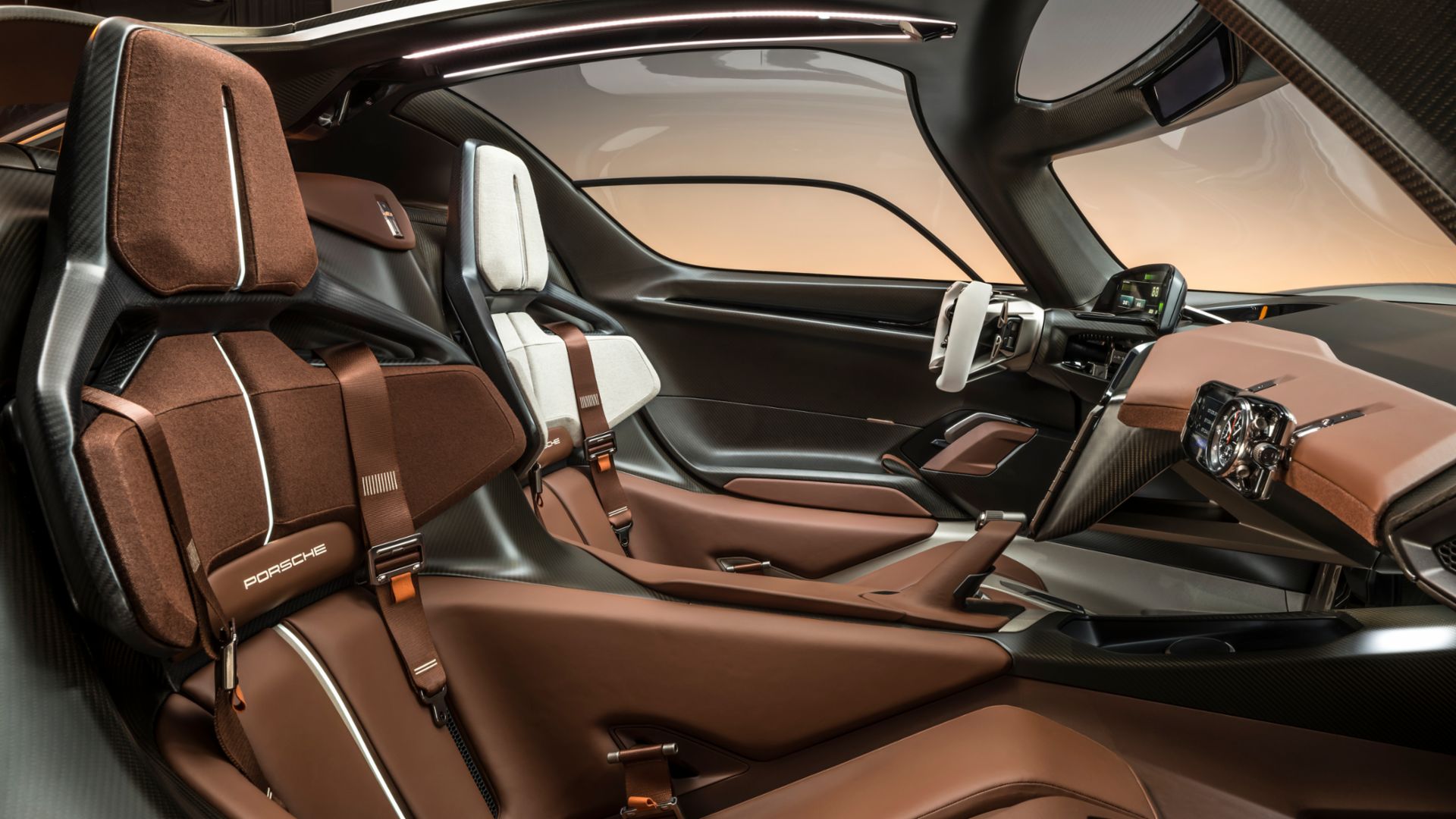
The interior of the Mission X showcased a driver-focused design with asymmetry and a unique color concept. The two seats were colored differently, with the driver’s seat in Kalahari Grey, forming a unified color unit with the center console and dashboard, while the passenger seat featured the contrasting Andalusia Brown shade. The interior also included CFRP seat shells, six-point seatbelts integrated into the monocoque, and an open-top steering wheel with mode switches and shift paddles, reminiscent of motorsport. Multiple cameras were installed, with recording starting when the driver pressed the Record button (REC) on the multi-purpose controller.
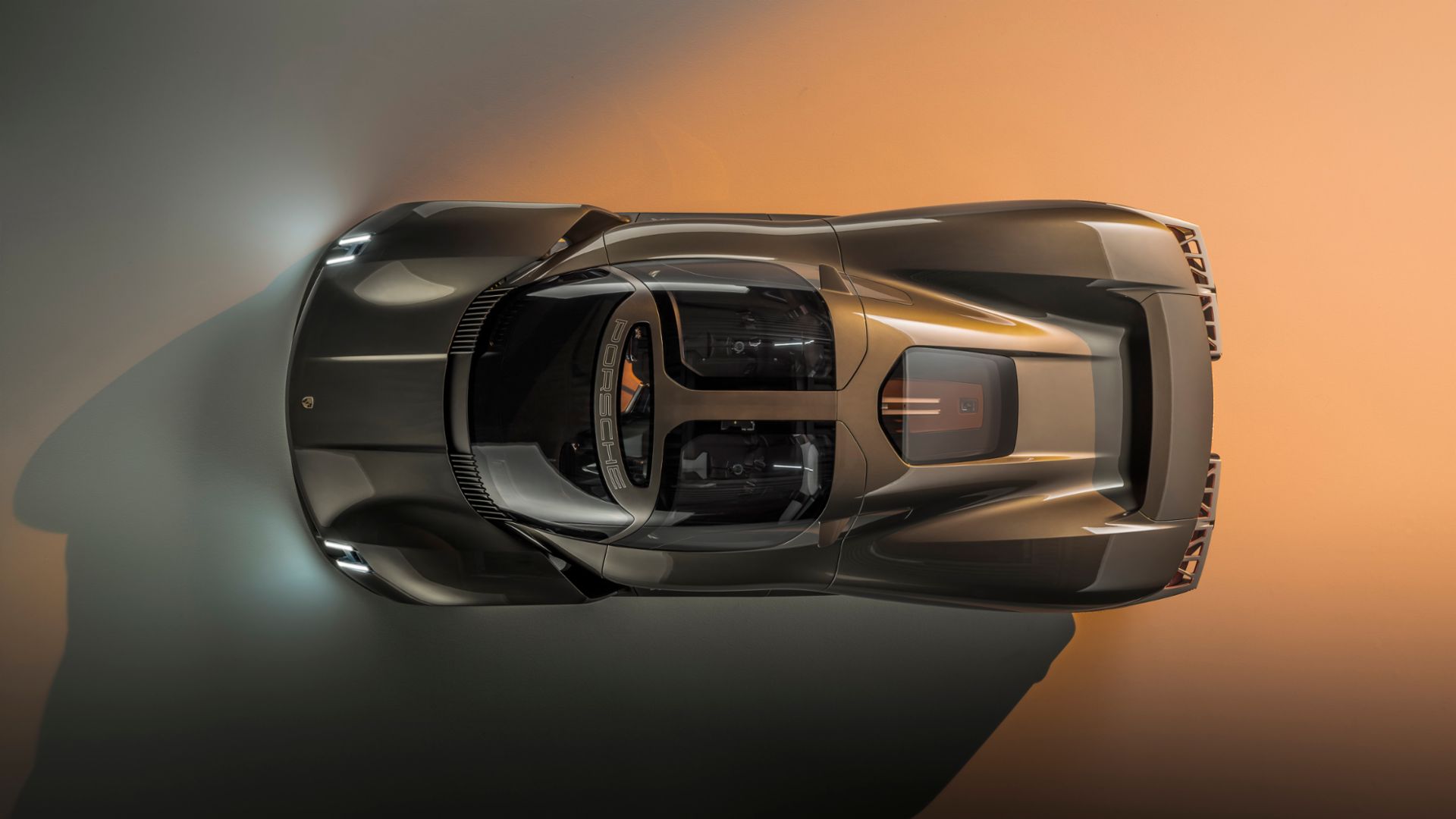
A notable highlight on the passenger side was the bayonet system embedded in the instrument panel, allowing for the attachment of a stopwatch module. Porsche Design created a special stopwatch module for the Mission X, featuring both analogue and digital displays. The clocks were designed for racetrack and rally use, capable of displaying lap times and vital driver data.
The battery of the Mission X was centrally installed behind the seats, following the ‘e-core layout’ that centered the mass in the car. This layout, similar to a conventionally powered mid-engined car, provided a foundation for excellent agility.
In conclusion, the Porsche Mission X stands as a remarkable testament to the brand’s unwavering commitment to pushing the boundaries of automotive excellence. With its visionary design, advanced technology, and electrifying performance, the Mission X redefines what a hypercar can be. As Porsche celebrates 75 years of sports car heritage, the Mission X emerges as a symbol of the brand’s future-forward mindset, propelling the automotive industry towards a new era of sustainable speed and exhilaration. With its premiere, the Mission X leaves an indelible mark, inspiring us to anticipate the extraordinary possibilities that lie ahead in the world of Porsche sports cars.
Discover more from SNAP TASTE
Subscribe to get the latest posts sent to your email.



